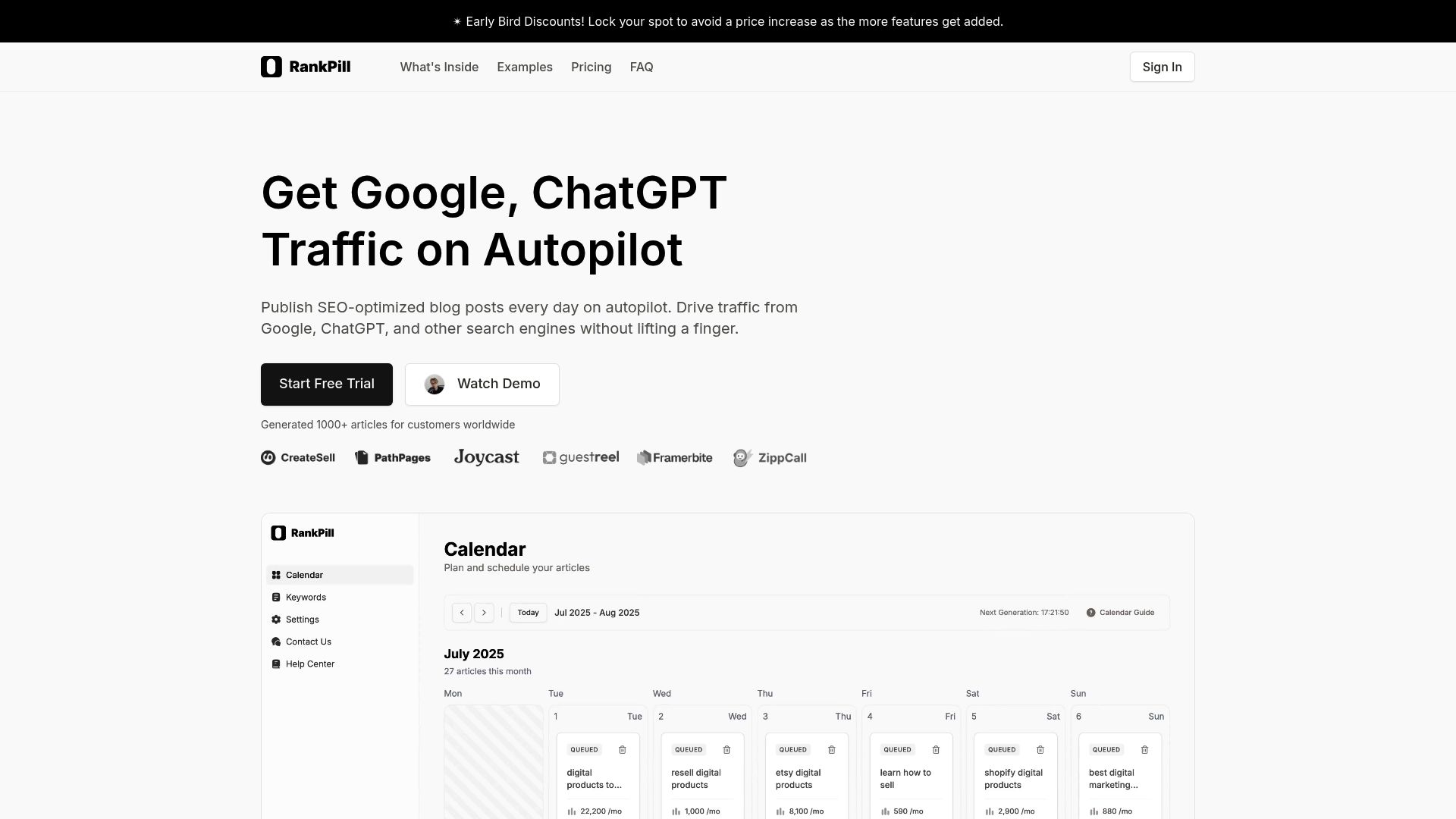Struggling to get your website noticed in Google search results? You’re not alone—billions of searches happen every day, but only a select few sites capture meaningful attention.
The difference often comes down to strategy. Knowing how and where to place keywords can make or break your online visibility. Effective keyword placement is what separates hidden websites from those at the top of Google.
This guide will show you the most effective, up-to-date methods for adding keywords to your website in 2025. You’ll learn the best practices, tools, and actionable steps to optimize your site for both search engines and real users. We’ll cover everything from keyword research and mapping to on-page optimization, advanced strategies, and future trends.
Understanding Keywords and Their Role in SEO
Grasping the fundamentals of keywords is crucial for anyone interested in adding keywords to your website effectively. Keywords act as the bridge between what users are searching for and the content you provide. By understanding their types and purpose, you’ll set your site up for long-term SEO success.

What Are Keywords?
At its core, a keyword is any word or phrase that people type into search engines. For adding keywords to your website, you’ll use a mix of:
- Short-tail keywords: Broad, high-volume terms like “running shoes.”
- Long-tail keywords: More specific phrases, e.g., “best trail running shoes for women.”
- LSI (Latent Semantic Indexing) keywords: Related terms and synonyms.
- Semantic keywords: Words that capture context and intent, not just exact matches.
Choosing the right blend helps your content reach the right audience.
Why Keywords Still Matter in 2025
Despite constant changes in SEO, keywords remain foundational. Google’s algorithms are smarter than ever, but they still rely on keywords to match user queries to web content.
A staggering 93% of online experiences begin with a search engine (BrightEdge). This means adding keywords to your website is still one of the most direct ways to connect with potential visitors.
How Search Engines Use Keywords
Search engines use keywords to crawl, index, and rank your pages. When adding keywords to your website, you’re giving Google the signals it needs to understand your content.
Modern algorithms, however, go beyond counting keyword frequency. They analyze intent using semantic search—figuring out what users really want, not just what they typed.
Types of Keyword Intent
Understanding intent is vital when adding keywords to your website. There are four main types:
- Navigational: User wants a specific site (“Facebook login”)
- Informational: User seeks knowledge (“how to tie running shoes”)
- Transactional: Ready to buy or act (“buy trail running shoes online”)
- Commercial: Researching before a purchase (“best running shoes 2025”)
Matching keyword intent to your content increases relevance and conversions.
Keyword Placement vs. Keyword Stuffing
Smart keyword placement is essential. Overusing keywords (known as “keyword stuffing”) can harm your rankings and drive users away. Google’s algorithms penalize sites that try to game the system.
To avoid these pitfalls, focus on natural language and user experience. For more details on best practices and what to avoid, check out Avoiding keyword stuffing.
The Shift Toward Topic Clusters and Semantic SEO
SEO in 2025 is about more than sprinkling keywords on a page. Adding keywords to your website should support topic clusters—groups of related content that build authority on a subject.
Search engines now reward context, depth, and topical authority. By weaving related terms and answering user questions, you future-proof your SEO strategy.
Real-World Example: Keyword Success Story
Consider a fitness blog that revamped its content by adding keywords to its website using topic clusters. Within months, organic traffic doubled, and the site began ranking for dozens of new, high-converting phrases.
This success shows that thoughtful keyword integration—focused on intent and structure—can lead to dramatic growth.
Step 1: Keyword Research for 2025
Ready to unlock the power of adding keywords to your website in 2025? It all starts with smart, strategic research. This step ensures every phrase you target has real potential to drive traffic, match user intent, and boost your visibility in search results.

Identifying Your Target Audience and Goals
Before adding keywords to your website, you need to know who you're reaching. Start by building user personas—detailed profiles that capture your ideal visitors’ needs, pain points, and search behaviors.
Define your business objectives. Are you trying to boost sales, grow your email list, or increase brand awareness? Aligning keywords with these goals ensures your SEO efforts drive meaningful results. Think of keyword research as matchmaking: the better you know your audience, the more relevant your content becomes.
Using Modern Keyword Research Tools
The right tools make adding keywords to your website much easier and more accurate. Popular choices include Google Keyword Planner, Ahrefs, SEMrush, and Moz. For those on a budget, free options like Ubersuggest and AnswerThePublic offer valuable insights.
Here’s a quick comparison of features:
| Tool | Search Volume | Keyword Difficulty | Trends | Free Version |
|---|---|---|---|---|
| Google Keyword Planner | ✔️ | ✔️ | ✔️ | ✔️ |
| Ahrefs | ✔️ | ✔️ | ✔️ | ❌ |
| SEMrush | ✔️ | ✔️ | ✔️ | Limited |
| Moz | ✔️ | ✔️ | ✔️ | Limited |
Leverage these tools to uncover new opportunities and stay ahead of your competitors.
Analyzing Competitors for Keyword Opportunities
One of the smartest moves when adding keywords to your website is learning from the competition. Use tools like SEMrush or Ahrefs to see which keywords your top rivals rank for—and which ones they’re missing.
Identify keyword gaps where your site can stand out. For example, if a competitor ranks for “eco-friendly running shoes” but not “sustainable trail shoes,” target the latter. This approach helps you focus on low-hanging fruit and avoid direct battles with industry giants.
Finding Long-Tail and Semantic Keywords
Long-tail keywords are the secret sauce for adding keywords to your website that attract highly targeted visitors. These phrases—like “best trail running shoes for flat feet”—are less competitive and more likely to convert.
Embrace semantic keywords too. Tools such as Google’s “People Also Ask,” Autocomplete, and AnswerThePublic reveal related questions and phrases. Targeting these helps you capture voice searches and featured snippets, making your content more discoverable.
Evaluating Keyword Metrics and Prioritization
Not all keywords are created equal. When adding keywords to your website, focus on metrics like search volume, keyword difficulty, cost-per-click (CPC), and relevancy. Prioritize phrases that balance good volume with achievable competition.
For a deeper dive, check out Keyword metrics and analysis—it breaks down how to analyze and prioritize keywords effectively. Remember, long-tail keywords now account for 70% of all searches, so don’t overlook them in your strategy.
Building a Strategic Keyword List
Once you’ve gathered your research, it’s time to organize. Use a spreadsheet to group keywords by topic, intent, and where they fit in your sales funnel. For example, informational keywords work well for blog posts, while transactional terms belong on product pages.
Keyword mapping ensures you’re adding keywords to your website in the right places, preventing overlap and boosting your topical authority. Consistent organization keeps your SEO efforts focused and measurable.
Avoiding Outdated Tactics
Keyword stuffing is out—search engines are smarter than ever. Instead, concentrate on quality content and genuine user intent when adding keywords to your website. Avoid obsessing over keyword density; focus on informative, engaging writing that answers real questions.
User experience trumps old-school tricks. By staying current with SEO best practices, you’ll future-proof your site and keep both Google and your audience happy.
Step 2: Mapping and Organizing Keywords Across Your Website
Mapping and organizing keywords is the backbone of a successful SEO strategy. Without a clear plan, even the best keywords can get lost or compete against each other—hurting your rankings. Let’s break down how to build a robust framework for adding keywords to your website and ensure every page pulls its weight.
Creating a Keyword Map for Your Site Structure
Building a keyword map starts with a site-wide view. Assign primary and secondary keywords to each page based on intent and relevance. This prevents overlap—known as keyword cannibalization—and ensures every part of your website has a clear focus.
A practical way to approach adding keywords to your website is to use mapping tools or spreadsheets. For a step-by-step guide, check out Mapping keywords on your site to dig deeper into extraction and organization best practices.
Optimizing Core Pages: Homepage, Services, and Product Pages
Core pages demand special attention. Your homepage should target broad, high-value terms that reflect your brand or main offering. Service and product pages, on the other hand, benefit from more specific, commercial intent keywords.
For example, when adding keywords to your website, use the homepage for general terms (like "eco-friendly shoes") and product pages for detailed phrases ("women's recycled running shoes"). This tailored placement helps each page attract the right traffic and increases conversion potential.
Blog and Content Strategy Alignment
Blogs are the perfect place to expand your keyword reach. Plan content around clusters—pillar posts supported by related articles. This structure lets you cover broad topics while targeting long-tail variations and supporting your main site pages.
When adding keywords to your website, use your blog to address informational and question-based searches. Internal links between blog posts and core pages strengthen the SEO value of both and guide visitors through your content funnel.
Handling Existing Content and Keyword Overlap
Duplicate keyword targeting can drag down your rankings. Audit your content to spot pages competing for the same terms. If you find overlap, decide whether to merge, update, or refocus content.
A simple spreadsheet can help track where each keyword lives. By organizing and updating, you ensure adding keywords to your website boosts rather than splits your SEO efforts.
Using Spreadsheets and Tools for Organization
Organization is key for scalable SEO. Use spreadsheets, Airtable, or Trello to visually map keywords to pages. Here’s a sample table setup:
| Page URL | Primary Keyword | Secondary Keywords |
|---|---|---|
| / | eco-friendly shoes | green sneakers, recycled |
| /women-running | women's running shoes | trail shoes for women |
Templates like this make adding keywords to your website a repeatable, trackable process.
Balancing SEO with User Experience
Never sacrifice readability for SEO. Keywords should flow naturally—avoid awkward phrasing or unnatural repetition. The goal is to enhance both search visibility and user satisfaction.
When adding keywords to your website, always prioritize clarity and engagement. Remember, search engines reward content that serves real users, not just algorithms.
How AI-Powered Platforms Like RankPill Simplify Keyword Mapping
AI tools like RankPill automate much of the heavy lifting. They analyze your site, suggest relevant keywords, and help distribute them for maximum impact. These platforms make adding keywords to your website faster, more accurate, and accessible—even if you’re not a technical SEO expert.

Step 3: On-Page Keyword Optimization Best Practices
Optimizing your site’s pages for search engines is where the real magic happens. If you’ve done your research, now’s the time to make every word count—literally. Adding keywords to your website isn’t about stuffing, but about weaving them into your content in strategic, user-focused ways. Let’s break down the best practices for 2025.

Where to Add Keywords for Maximum Impact
Knowing where to place keywords is half the battle. When adding keywords to your website, focus on these high-impact areas:
- Title Tags: The first thing Google and users see in search results.
- Meta Descriptions: Summarize your page and entice clicks.
- Headings (H1-H3): Organize content and signal relevance.
- Image Alt Text: Boost accessibility and image SEO.
- URLs: Clean, keyword-rich URLs improve clarity.
- Body Content: Naturally integrated for readers and search bots.
Here's a quick comparison:
| Element | Optimized Example | Unoptimized Example |
|---|---|---|
| Title Tag | Best Running Shoes for Women 2025 | Home |
| URL | /best-running-shoes-women-2025 | /page123 |
| H1 | Best Trail Running Shoes for Women | Welcome |
If you want a step-by-step walkthrough on adding keywords to your website, check out this helpful guide on how to add keywords.
Writing SEO-Friendly Title Tags and Meta Descriptions
When adding keywords to your website, make sure primary and secondary keywords appear naturally in your title tags and meta descriptions. Keep title tags under 60 characters and meta descriptions under 155 to avoid truncation in search results.
- Place your main keyword near the start of the title.
- Use action words and value statements in descriptions.
- Avoid repetition—every page should have a unique tag and description.
Example:
- Title Tag: “Best Running Shoes for Women 2025 | Comfort & Performance”
- Meta Description: “Discover the top-rated women’s running shoes for trails and roads. Expert reviews, buyer’s guide, and where to buy in 2025.”
Thoughtful placement here improves both rankings and click-through rates.
Optimizing Headings and Subheadings
Headings help both users and search engines scan your content efficiently. When adding keywords to your website, structure your headings with clarity:
- Use the main keyword in your H1, and related terms in H2/H3s.
- Avoid keyword stuffing—make sure headings read naturally.
- Break content into logical sections for better readability.
For example, an H2 could be “Best Trail Running Shoes for Women,” while H3s dig into reviews or comparisons. This approach helps Google understand your page’s context.
Integrating Keywords into Body Content
The body of your content is your chance to showcase expertise. When adding keywords to your website, prioritize readability. Sprinkle your main keyword and related terms throughout, but always write for humans first.
Use Latent Semantic Indexing (LSI) keywords—these are related phrases like “women’s trail sneakers” or “lightweight running shoes.” They support your main topic and help you appear for more searches.
A good rule: If a sentence feels forced, rework it. Natural flow is key for both users and search engines.
Image Optimization and Visual Content
Images are often overlooked in SEO. When adding keywords to your website, don’t forget your visuals:
- Use descriptive, keyword-rich filenames (e.g.,
trail-running-shoes-women2025.jpg). - Add alt text that accurately describes the image and includes a relevant keyword.
- Compress images for faster load times.
Before optimization, an image might be named IMG_1234.jpg with no alt text. After, it becomes best-trail-running-shoes-women.jpg with alt text: “Best trail running shoes for women on rocky terrain.”
Internal and External Linking Strategies
Internal and external links add depth and authority to your pages. When adding keywords to your website, use keyword-rich anchor text—but only when it makes sense.
- Link to other relevant pages on your site to keep users engaged.
- Reference trusted external sources for added credibility.
- Avoid over-optimizing anchor text (mix branded, generic, and exact match).
Smart linking not only supports SEO but also enhances user experience by providing additional value.
Mobile and Voice Search Optimization
With more than half of searches coming from mobile and 27% using voice, optimizing for these formats is crucial. When adding keywords to your website, include short, conversational phrases that mimic how people speak.
- Use question-based keywords like “What are the best running shoes for women?”
- Ensure your site loads quickly and displays well on all devices.
- Prioritize concise answers for voice assistants and featured snippets.
Adapting your content for these trends ensures you stay visible as search habits evolve.
Step 4: Advanced Keyword Strategies and Ongoing Optimization
Staying ahead with adding keywords to your website in 2025 means going beyond the basics. Advanced strategies help you build topical authority, capture new SERP features, and adapt to Google’s ever-evolving landscape. Let’s break down the most effective approaches.
Leveraging Semantic SEO and Topic Clusters
Modern SEO is all about context. Instead of simply adding keywords to your website, focus on building topic clusters—groups of related content linked by a pillar page. This structure helps search engines understand your expertise across a broader subject.
For example, if your pillar page targets “sustainable gardening,” supporting articles might cover composting tips or eco-friendly pest control. Smart internal linking between these pages signals topical authority to Google, boosting your chances of ranking for competitive queries.
- Create a main pillar page targeting a broad keyword
- Write supporting content for long-tail and related terms
- Link all cluster pages back to the pillar and to each other
This approach not only organizes your site but also makes adding keywords to your website more natural and effective.
Targeting Featured Snippets and “People Also Ask”
SERP features like featured snippets and “People Also Ask” boxes present new ways to get noticed. By adding keywords to your website in the form of clear, concise answers to common questions, you can increase your chances of being selected for these spots.
- Use H2/H3 headers to pose frequently asked questions
- Answer directly below with 40-60 word responses
- Format content with tables, lists, or bullet points when relevant
According to SEO Strategies for 2025, optimizing for snippets and structured data is essential for maximizing visibility. Not only does this drive more clicks, but it also positions your site as a trusted resource.
Local SEO and Geo-Targeted Keywords
If you serve a local audience, adding keywords to your website should include location-based phrases. Think “best vegan bakery in Austin” or “emergency plumber near me.” These geo-targeted keywords help you appear in local packs and maps.
Make sure to:
- Add your city or region in page titles, headings, and content
- Optimize your Google Business Profile with keywords and accurate info
- Build local citations and encourage reviews
Voice search is also fueling the need for natural, conversational phrases—another reason to keep your local SEO strategy sharp.
Adapting to Algorithm Updates and AI Search
Search engines are smarter than ever, with AI-driven algorithms like Google’s BERT and MUM interpreting search intent at a deeper level. To keep up, your approach to adding keywords to your website must evolve.
Stay agile by:
- Following trusted SEO news sources for the latest updates
- Regularly auditing your content for relevance and intent alignment
- Embracing new best practices, like semantic optimization and structured data
Check out SEO Priorities for 2025 for an in-depth look at strategies that future-proof your keyword tactics.
Measuring Keyword Performance and ROI
Tracking results is vital to know if your effort in adding keywords to your website is paying off. Use tools like Google Search Console, Google Analytics, and third-party platforms to monitor rankings, click-through rates, and conversions.
Here’s a quick table of metrics to track:
| Metric | Tool Example | Why It Matters |
|---|---|---|
| Rankings | Google Search Console | Shows visibility progress |
| CTR | Google Analytics | Measures engagement |
| Conversions | GA, CRM | Connects SEO to business |
Review your data monthly. Adjust your keyword strategy based on what’s working and where there are gaps.
Refreshing and Updating Content for Better Rankings
Google values freshness. Regularly revisit your top pages and update them by adding keywords to your website that reflect current trends and user intent. Refresh stats, rewrite outdated sections, and add new internal links.
Sometimes, a simple update can trigger a significant traffic boost. Prioritize evergreen content and make updates part of your ongoing SEO routine.
Common Mistakes and How to Avoid Them
Even the best can slip up. Common pitfalls when adding keywords to your website include ignoring user intent, keyword stuffing, and neglecting technical SEO fundamentals.
- Don’t force keywords where they don’t belong
- Always write for humans first—search engines second
- Use tools to check for crawl errors, broken links, and slow load times
Avoid these traps, and your advanced keyword strategy will deliver consistent, long-term results.
The Future of Keyword Optimization: Trends for 2025 and Beyond
As we look ahead, adding keywords to your website will continue to evolve alongside search technology. The future promises more sophisticated tools, smarter algorithms, and a greater emphasis on user experience. Let’s explore the major trends shaping keyword optimization for 2025 and beyond.
The Rise of AI and Machine Learning in Search
Artificial intelligence is transforming how search engines interpret content and intent. Google’s BERT and MUM updates use advanced natural language understanding, making adding keywords to your website less about exact matches and more about context. AI can now connect user queries to relevant pages, even if the phrasing is different. This means your optimization efforts should focus on comprehensive, well-structured content that answers real questions.
Staying updated with AI-driven changes is crucial. Machine learning models are constantly refining what matters for rankings, so flexibility is key when adding keywords to your website.
The Shift Toward Zero-Click Searches
Zero-click searches—where users find answers directly on the results page—are on the rise. Over 50% of searches now end without a click, according to SparkToro. This makes SERP features like featured snippets, knowledge panels, and “People Also Ask” boxes more important than ever.
Optimizing for these features goes beyond simply adding keywords to your website. It requires structuring content to answer questions directly. For deeper insight, see this Impact of SERP Features on Organic CTR study, which explores how these elements affect your visibility and click-through rates.
Visual and Video Keyword Optimization
Search trends show a growing emphasis on images and video. Platforms like YouTube and Google Lens now play a major role in how users discover content. When adding keywords to your website, don’t overlook image alt text, video descriptions, and multimedia metadata.
For example, using descriptive, keyword-rich filenames and captions makes your content discoverable in visual search. Video transcripts and closed captions also help search engines understand your content’s topic and context.
User Experience Signals and Core Web Vitals
Google measures more than just keywords—it also looks at how users interact with your site. Core Web Vitals, like page speed, mobile usability, and visual stability, directly impact rankings. Sites that meet these standards see 24% less abandonment.
Adding keywords to your website should never compromise user experience. Instead, integrate them naturally while ensuring fast load times and a seamless experience on all devices.
Preparing for Voice and Conversational Search
Voice search is changing the way people find information. Smart speakers and virtual assistants favor conversational, question-based queries. When adding keywords to your website, use natural language and focus on answering specific questions.
Consider how users might phrase queries verbally. Optimizing for “who,” “what,” “where,” “when,” and “how” can help your content surface in voice search results.
Building a Future-Proof Keyword Strategy
The landscape will keep shifting, but some principles remain timeless. Focus on evergreen topics, adaptability, and ongoing learning. Monitor industry updates and refine your approach as algorithms evolve.
A future-proof strategy for adding keywords to your website means staying curious, testing new methods, and always prioritizing value for your audience.
You’ve just explored the latest strategies for adding keywords to your website and how AI-powered tools like RankPill can make the process a breeze. Whether you want to boost your rankings, attract more of the right visitors, or save hours on keyword research and content planning, there’s never been a better time to take action. If you’re ready to put these insights into practice and see real results in 2025, let’s make your SEO journey easier—Get Started today and watch your organic traffic grow!